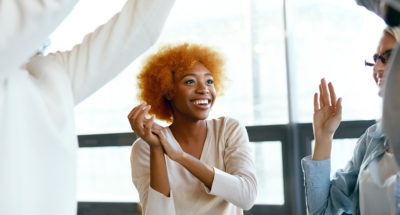
1-2-3 Clap: A School Team Building Activity
Partners engage in a counting and clapping team building activity that welcomes mistakes, and reflect on the experience after.

Partners engage in a counting and clapping team building activity that welcomes mistakes, and reflect on the experience after.
School staff will:
Take a moment to reflect on your experience with making mistakes in a group.
This activity demonstrates how making mistakes together is a fast track to building a cohesive group.
Adapted from an activity created by Oakland Unified School District’s Department of Social-Emotional Learning and Leadership.
Do you notice a shift in group dynamics after this practice? If so, how?
A study of reform efforts in 12 Chicago schools found that enabling positive, trusting relationships among staff members, including the leadership, were at the heart of school improvement.
Underlying trust is psychological safety, or the feeling that it’s safe to make mistakes, admit ignorance, or voice concerns and opinions, without the fear of being silenced or humiliated by co-workers or leadership. Numerous studies show that when employees feel psychologically safe, their ability to learn from mistakes improves, resulting in better job performance.
When staff members trust one another and feel psychologically safe, creating school environments in which ongoing improvement is the norm becomes much easier. However, one study found that workplace leaders cannot assume that psychological safety exists in every department, so it’s important to intentionally cultivate this safety through activities such as this one.

Are you ready to build a kinder, happier school where everyone belongs? Join Greater Good Educators! Explore the science of well-being in a supportive community of educators from around the world. Registration is now open for the 2025-2026 school year!
Comments